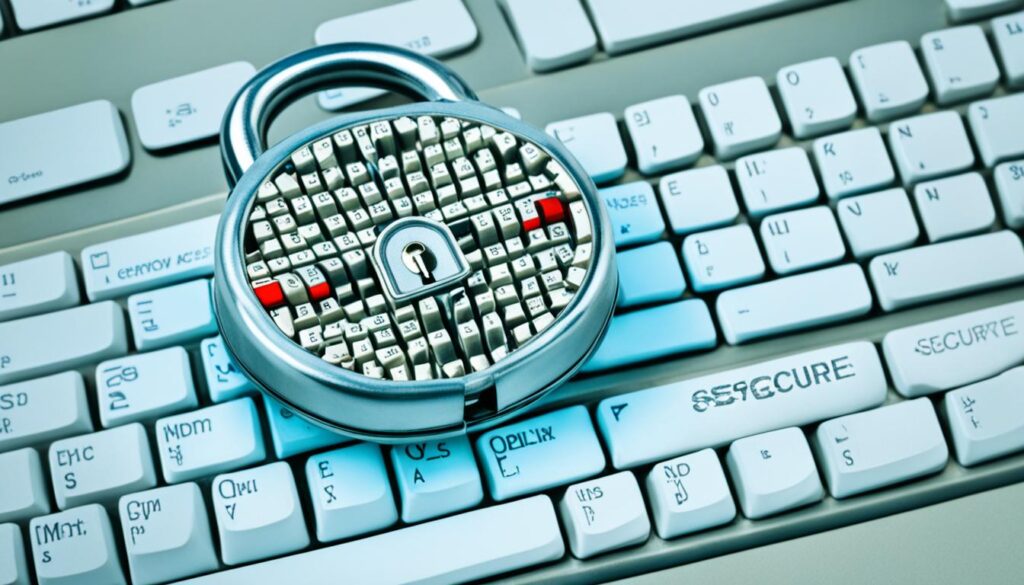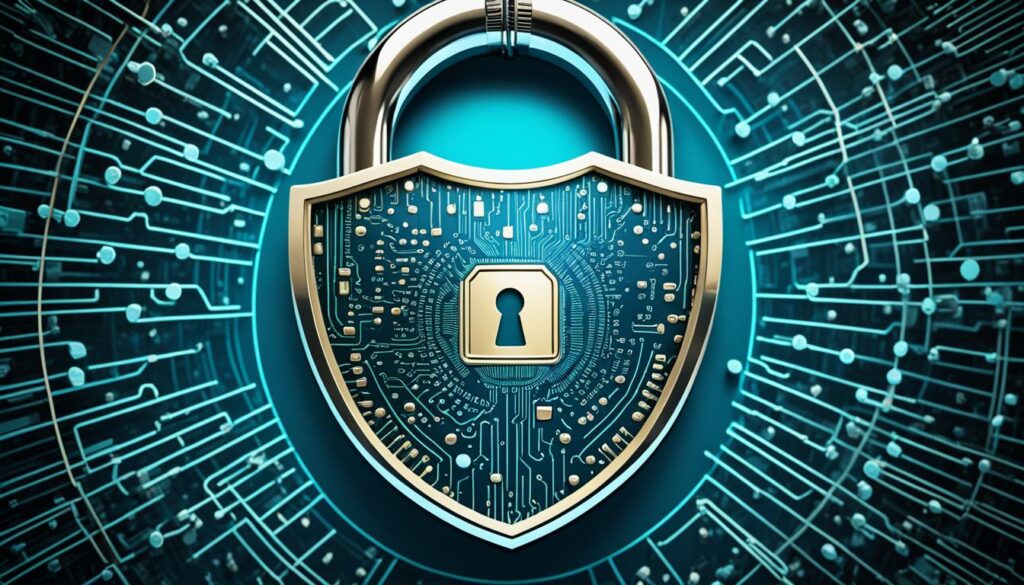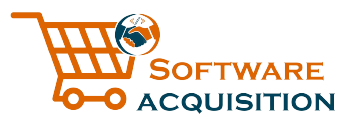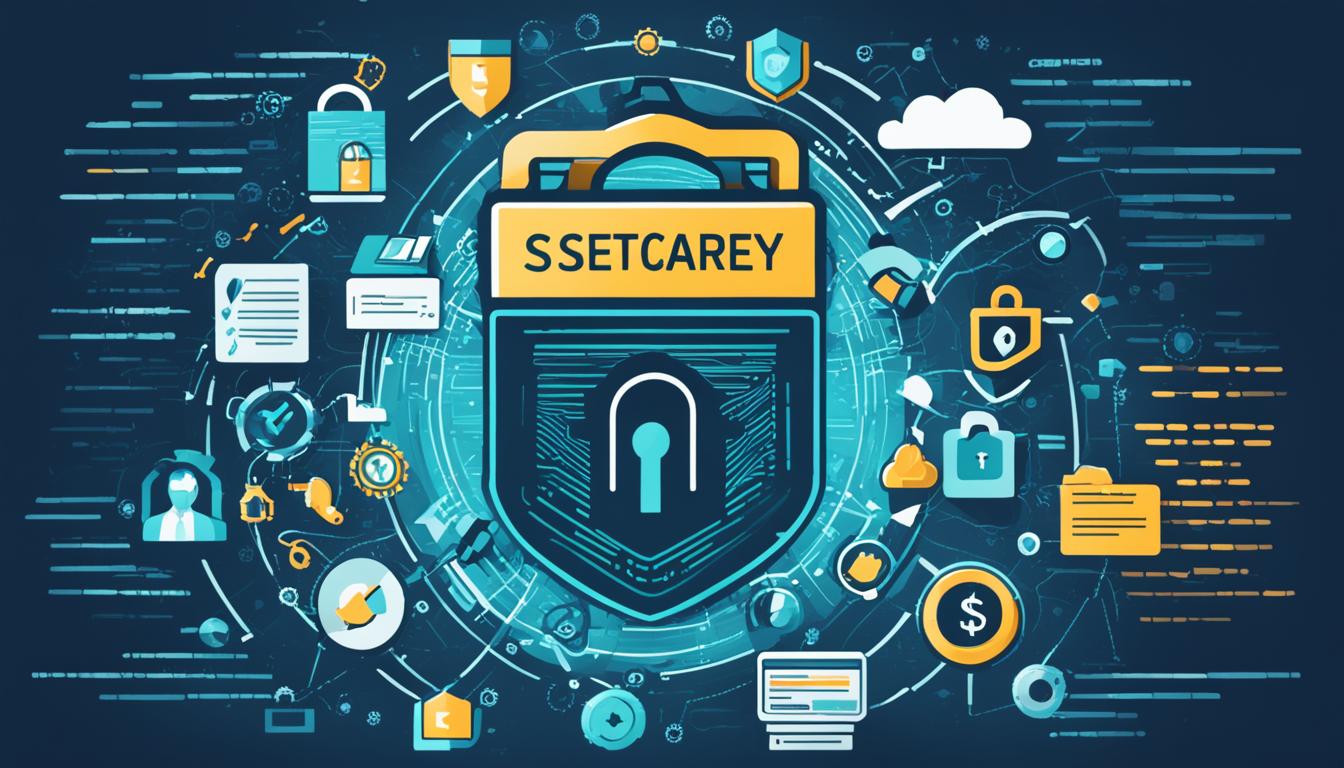Securing software acquisitions is essential in today’s business world, especially for staying safe online. The risk of attacks through software is high. Attackers can use third-party software to get into systems and steal data. This risk is bigger because these software makers are often trusted. This trust makes it easier for bad actors to harm businesses.
The Canadian Centre for Cyber Security warns that firms need to focus on securing how they receive software. This means regularly updating and fixing any weaknesses found. By keeping software safe, companies are protecting their systems and information. It’s crucial to be on the lookout before an attack happens. This way, the software a company uses stays safe, even if it comes from an outside source.
Key Takeaways
- Cybersecurity posture is critical in M&A due diligence, with almost 60% of firms prioritizing it.
- Technology acquisition and post-acquisition cyber risk are top concerns in M&A processes.
- Verizon’s acquisition of Yahoo’s reduced deal price by $350 million underscored the impact of security breaches.
- Critical cybersecurity issues reported during M&A can jeopardize negotiations and deal success.
- Robust cybersecurity measures are essential to protect confidential IT systems in software acquisitions.
Understanding Software Supply Chain Attacks
The software supply chain is complex and linked, making it a target for hackers. It changes raw materials like code into the final software product. Vulnerabilities can exist at every step. And because of these, companies need better ways to buy software safely.
Definition of Software Supply Chain
The software supply chain is the process of making software. This starts from the first design through to putting the software in use. Code from different sources is put together, which can be attacked. Attackers may add harmful code or take over developer accounts, putting the software’s safety at risk.
Examples of Successful Attacks
The SolarWinds attack is a big example of a software supply chain attack. Hackers slipped bad code into a real software update. They hit about 18,000 users, even in the U.S. government. This made security in software procurement very important. President Biden also acted to improve the safety of our software by setting new rules.
In 2022, over 10 million people were hurt by these attacks. Such events show how important it is to keep our software secure. Tools like Synopsys Black Duck® and Coverity® help spot issues early, adding a layer of defense.
| Key Highlights | Details |
|---|---|
| SolarWinds Attack | Affected 18,000 customers through a malicious software update. |
| Impact in 2022 | Over 10 million people affected by supply chain attacks. |
| Regulatory Response | Executive order from President Biden to strengthen cybersecurity guidelines. |
| Tools for Mitigation | Synopsys Black Duck®, Coverity®, and WhiteHat Dynamic®. |
| Future Risks | Gartner Inc. projects 45% of global organizations will experience supply chain attacks by 2025. |
| Cost of Breaches | The average cost of a data breach globally in 2023 was $4.45 million (IBM). |
These major attacks show the big risks in the software supply chain. To stay safe, adding security steps and checking for issues often is key.
The Importance of Security in Software Acquisition
Security in getting software is very important. Supply chains are complex and have many layers. This makes getting secure software hard. It’s crucial to have smart plans to make sure the software is safe.
Companies often use legal contracts to try to manage these risks. But, this doesn’t always solve the problem of cyber attacks. Many companies don’t focus on security at the start of getting new software. This makes things even riskier. It’s vital to think about security right from the beginning.
The Software Assurance Framework (SAF) has shown that it helps in many ways. It’s great for reducing cyber risks.
The SAF is always changing to keep up with new security needs. The A-SQUARE method outlines seven steps to help spot important security needs. These tools push for starting with strong security measures. They help a lot in buying safe software.

Software is everywhere now, growing the market a lot. We must focus on security when buying software. Companies like McAfee and Norton make key security tools. These tools protect software from being attacked.
| Vendor | Solution |
|---|---|
| McAfee | Antivirus Software |
| Norton | Encryption Tools |
There are six key parts to keeping info safe. They are important for both security and other software makers. Talking about these needs early on helps risk much less. This matches with the Secure Software Acquisition Model (RMSSA). It shows the best ways to focus on security early.
Understanding software security is more than just following rules. It’s about being fully ready and using the best ways to check software is safe. This helps keep a company’s assets from danger.
Identifying Risks in Software Acquisitions
Finding the risks in software buying is important for keeping investments safe. A study with 2,799 IT and business leaders found that 65% had regret because of security worries in deals. It shows the need for good software acquisition best practices to handle likely software risks, whether they are private or open-source.
Acquisitions and mergers come at a big cost, often based on revenue or earnings. But firms usually don’t think much about security. The chance of a deal falling through from a security risk in software is low. Yet, strong software security checks are so important in buying another company. Making sure the software meets certain standards can show it’s safe to use.
After the deal, new companies might face many security problems. It’s crucial to check and understand the risks in the software chain. This helps to stop or lessen the problems before they happen. The insurance sector might change their rates based on strong security practices, but this isn’t common in deal decisions. But remember, taking too long to check these risks might hurt the deal.
- Increased risk of cyber attacks from old third-party tech.
- Data leaks and hacks due to poor security during changes.
- Possible struggles with different data safety rules between companies joining.
- Security holes that hackers can use.
- Need for always improving security practices to stay strong against attacks.
The Sonatype report notes a 650% rise in attacks on open-source in 2021, with 12,000 attacks. This spike shows the growing dangers in buying software. The Acquisition Security Framework (ASF) guides companies to use strong cyber risk control in the whole chain. Working together in the chain and through the life of the software helps keep your system safe and strong against cyber risks.
Best Practices for Secure Software Acquisition
It’s vital to ensure any software you get is resilient and safe. You should add secure steps from the beginning of its creation. This includes keeping it updated and following strict usage rules. These steps are key in making the software process strong and safe.
Integrating Security in the Development Stage
Starting with secure practices lowers risks a lot. Add security steps as the software is being made. This will stop many dangers before the software is used. The A-SQUARE method is great. It helps find and rank the security needs. It also matches up with big security areas needed for safe software. These areas include keeping information secret, making sure data is right, and allowing only the right people to do things.
Regular Patching and Updates
Keeping software up-to-date is as important as making it safe at first. This means always checking and improving the software. It makes sure it can stand against new dangers. Big security names like McAfee and Norton say this is very important.
Implementing Least Privilege Policies
Using strict rules on who can access what is crucial. It cuts down on ways bad actors can harm your software. By following strict rules, organizations control who can see important data. This stops any wrong entries and keeps the software safe.
Role of Open-Source Software in Software Acquisitions
Open-source software has changed how we get new software. It gives us options that are both flexible and affordable. A big moment was in 1970 when Edgar Codd talked about data in a special way. Then, in 1985, Michael Stonebraker started the Postgres project.
Since then, software like PostgreSQL and Lucene has grown a lot. They’re very important in getting software for all kinds of projects, big and small.
Challenges with Open-Source Software
But, using open-source software isn’t without its problems. It’s easy to make changes, but that can sometimes make the software less secure. The many ways software can be licensed also causes issues. Following the rules on how you can use the software is very important. Breaking those rules can lead to big legal troubles and unsafe software.
Security Measures for Open-Source Software
To keep open-source software safe, strong security actions are needed. It’s important to check for any weak points in the software regularly. Using updates that others in the community have checked is a key step too. Companies can also hire outside help, like with Black Duck Audit Services. These services check the code for any problems during times like buying other companies. This helps make sure the software is safe.
PostgreSQL has become a highly used database system because businesses support it. It’s often chosen for big government projects too. Lucene, a search engine tool, is another success story. It gets a lot of financial support and is popular around the world. To make the most of open-source software, it’s vital for companies to tackle its challenges head-on. This way, they can keep their software safe and meet their needs without worry.
Cybersecurity Measures for Software Acquisitions
When buying new software, making sure it’s secure is key. Companies need to use strong software security measures to lower risks. The Verizon-Yahoo deal shows why this matters. After finding data breaches, the deal’s price dropped by $350 million. This shows the big role that strong security plays in buying new software.
It’s vital to check security practices thoroughly. This means looking at the target company’s security rules, how they follow laws, and how they deal with risks from third parties. The sale of Yahoo to Verizon in 2017 faced big troubles because of data breaches. The breaches were found in 2013 and 2016. They teach us how important it is to examine security closely.

Taking a risk management approach can spot, handle, and lessen threats. This involves using security controls, testing software security well, and always checking for new threats. In merger and acquisition deals, nearly 60% of companies saw strong cybersecurity as an important part of their checks last year.
M&A deals are mostly concerned with:
- Data breaches and unauthorized access
- Problems with combining different systems
- Risks from suppliers and other outside partners
The finance, healthcare, and tech sectors put a lot of effort into cybersecurity. The data breach at Target in 2013, which came through a vendor, highlights the need for careful monitoring and managing vendors. It also underlined the importance of preventing unauthorized access.
Applying software acquisition best practices like keeping up with patches, stopping phishing, and ensuring strong passwords is crucial. Companies with advanced cybersecurity skills handle M&A cybersecurity dangers better. They do this by using the best rules, processes, and tools available.
Deciding what risks are okay and doing thorough risk checks is very beneficial. Training your workers in cybersecurity helps to create a culture where everyone cares about security. This gets all involved in keeping software acquisitions secure.
The Role of Automation in Enhancing Software Security
Automation is key to boosting software security. It cuts down human errors and makes cybersecurity consistent. This is especially helpful for small and medium-sized businesses hit by data breaches.
Security Orchestration, Automation, and Response (SOAR) technology is growing fast. From 2022’s $1.1 billion, it’s expected to hit $2.3 billion by 2027. With a growth rate of 15.8% annually, the trend shows how much we rely on automation in cybersecurity. XDR products also join in by bringing together security data from different sources.
Automating security setups helps companies spot threats right away and tweak firewalls for better defense. This eases IT teams’ work, letting them tackle more challenging security problems. Using RPA cuts down time on repetitive tasks, offering precise, error-free management.
The financial effects of data breaches can be huge, starting at $3.92 million. Automation reduces these costs by making security steps consistent and efficient. By 2025, the automation market could reach $265 billion. This shows its top role in cybersecurity today.
Automated tools also make meeting rules and guidelines simpler, cutting down on risks from human mistakes. Many sectors, including IT, HR, finance, and marketing, benefit from automation. It leads to better data quality and streamlined operations.
Companies using automated security are 1.5 times more likely to hit their goals. Automation helps secure software, lower alert stress, and improve overall cybersecurity positions significantly.
| Aspect | Impact of Automation |
|---|---|
| Cost of Data Breach | $3.92 million (average) |
| Annual Data Breaches Affecting Small Enterprises | 43% |
| Growth of SOAR Market (2022 to 2027) | $1.1 billion to $2.3 billion (15.8% CAGR) |
| Projected Automation Market Growth by 2025 | $265 billion |
| Increase in Organizational Goal Achievement | 1.5 times with automated security practices |
Conclusion
Securing software acquisitons is vital due to the rising threat of cyberattacks. It’s crucial to use a proactive method to reduce these risks. The Software Assurance Framework (SAF) is one such approach. It enhances cybersecurity across software purchases, as shown in successful project trials.
A-SQUARE helps gather and prioritize security needs in systematic steps. It ensures security goals match the entire process. Sadly, many organizations don’t focus on security early enough. This lack highlights the importance of starting security efforts from the beginning.
Research over the past ten years suggests several ways to better handle supply chain risks. They stress the critical role of security in acquiring software. These trends call for a united effort. This effort mixes risk analysis, early security integration, and using education and automation. It’s key to keep business activities safe and trust in digital operations strong.



